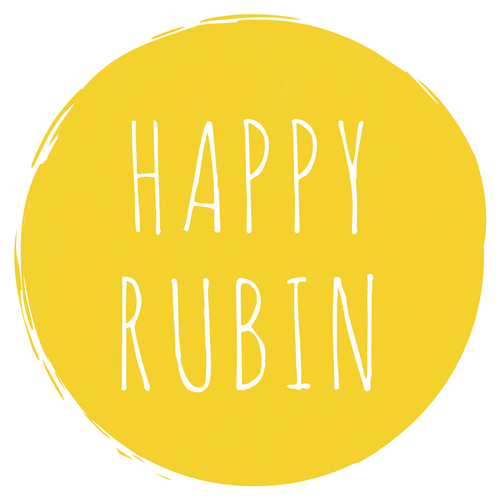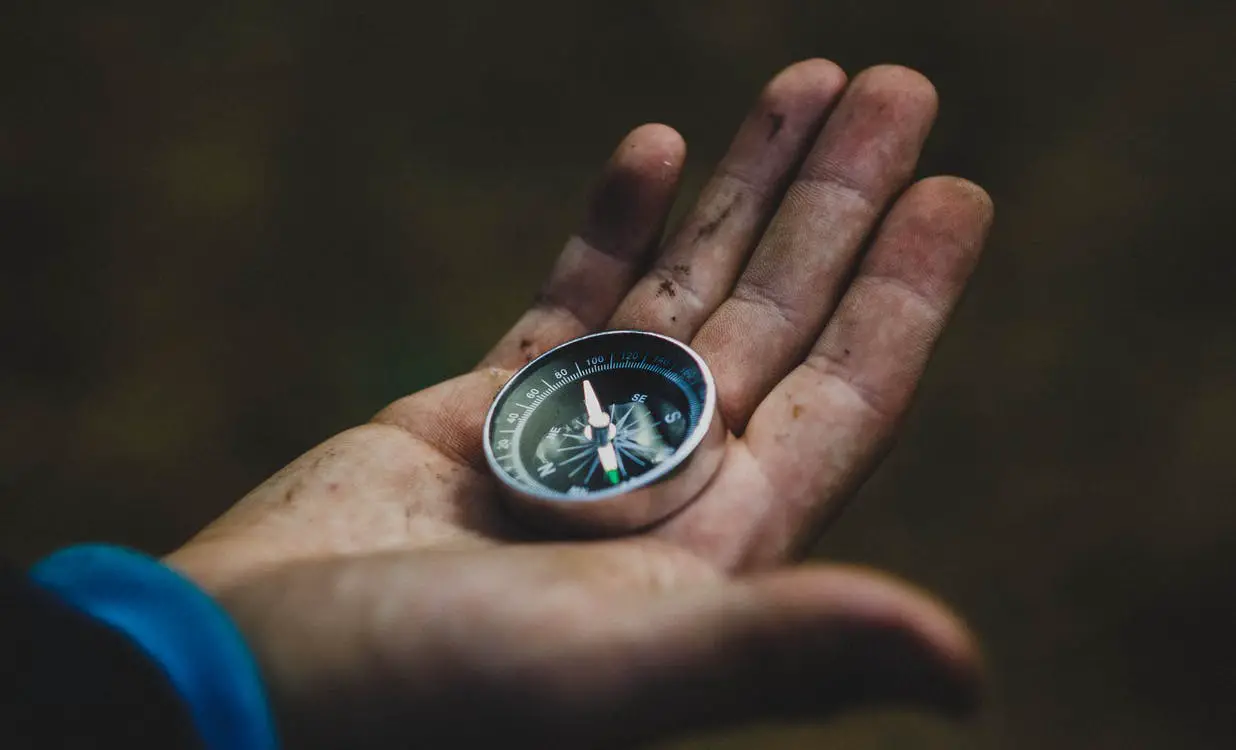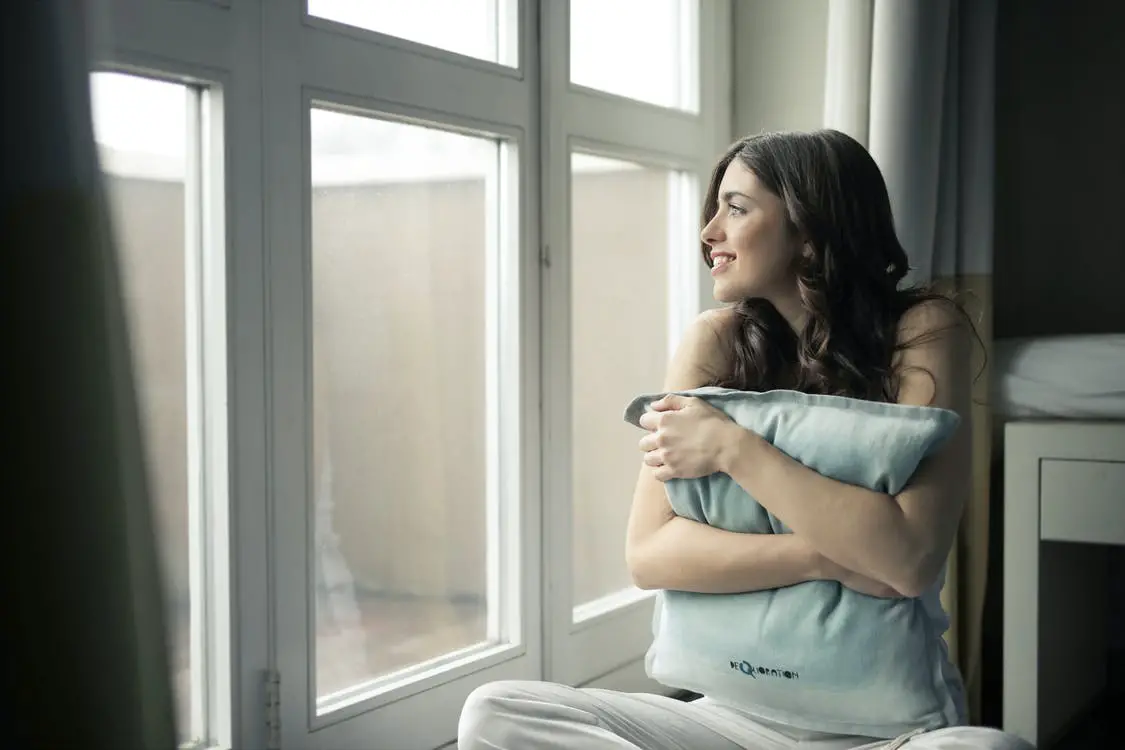![How To Deal With Sensory Overload [9 Tips For Overstimulation]](https://happyrubin.com/wp-content/uploads/2019/12/ik-ben-overprikkeld-150x150.jpg)
How To Draw & Read Tarot Cards [Step By Step Explanation]
![How To Draw & Read Tarot Cards [Step By Step Explanation]](https://happyrubin.com/wp-content/uploads/2019/04/tarotkaarten-leren-leggen-cursus.jpg)
How can you learn to lay tarot yourself and get meaning from tarot cards? In this blog article you will find an explanation with a step-by-step method to learn to lay tarot cards and to learn to read tarot. Read along…
Contents of this page:
How do tarot cards work? A tool for your intuition
Tarot cards are a tool so that your own intuition can receive and generate messages more easily. The tarot cards therefore have no messages of their own. You do everything yourself with your intuition, or your sixth sense.
If you want to do a reading completely independently, you don’t really need tarot cards: you just need to be well attuned to your own intuition. Then why would you use tarot cards? To boost your creativity. The cards provide extra inspiration.
How can you learn to lay tarot? This is how you proceed…

Do you want to learn how to lay tarot cards for yourself or for people in your environment? The basic ‘technique’ for reading these cards is simple. Follow the steps below:
- You draw one or more cards by feeling.
- You watch the scene on the map and then you feel the ‘ vibes ‘ the card gives you.
- You translate these vibes that your intuition has given you into a message. Is the card you have in front of you romantic, calm or action-packed? What kind of story unfolds when you have multiple cards in front of you?
How can I lay tarot cards? All steps in more detail…

Tarot can seem quite complicated for a beginner, because each card has a certain meaning that can be interpreted differently in different situations. Learning to lay a Tarot yourself is certainly not easy, but it is educational and fun. And of course Tarot can help you to get answers to problems in everyday life.
It is impossible to explain all aspects of Tarot in a single article, but this 6-step plan will hopefully give you a good idea of how you could start laying Tarot cards yourself.
Step 1: Buy a deck of tarot cards (and a book)
The first step, of course, is to buy your own deck of tarot cards. There are beautiful sets available and it is especially important that you choose one that appeals to you personally. Purchase tarot cards that you immediately feel connected to, so that more and more of your own energy can flow into the cards.
For that reason, never lend your tarot cards, because someone else can never do a tarot reading with them as well as you. You also don’t want the cards to give conflicting answers to your own readings. Perhaps it is also nice to immediately buy a book in which all the maps are explained.
Step 2: Determine which question you have
Before you can answer a question, it is of course important that you know exactly what that question is. Only then can you look for the correct tarot reading and you will really be able to do something with the answers you get from the Tarot.
With a simple question you may know immediately what you want to know, but with a painful or complicated matter it can be more difficult and take longer. However, spend enough time on it, because the right question is essential to the outcome.
Step 3: Choose a tarot reading that fits the question well
There are many different ways to lay tarot cards, from very simple to very elaborate. Below are some commonly used tarot readings. It is advisable to start simple at first and as you become more practiced expand the layouts you master. This way you can help the people in your environment (and yourself) faster and better.
Please note that the Tarot will never answer a certain question with yes or no immediately. It helps you better explain the feelings and thoughts you already had and point you in the direction of finding your solution. If you now know exactly what your question is (as we indicated in step 2), you must now find the best card reading for it.
Some commonly used tarot readings:
- In its simplest form you can draw a so-called day card from the Tarot deck every day . That card then says something about your day, or about an issue that you are struggling with at that moment.
- With the well-known laying with three random cards you ask the cards to make a statement about the past, present and future . Only you can give the meaning of this yourself by linking the cards to issues that are at play for you. For really complicated situations, this three-card laying is often not enough and a more elaborate pattern is needed.
- The Blockade is one of those more elaborate layouts, where the first card depicts your problem and the second card (placed across it) shows what is holding you back from solving the problem. The three remaining cards tell you what you feel, what you see and what actions you can take to get out of the deadlock.
- The Celtic Cross is a variant of The Blockade where more cards are used to illuminate even more backgrounds. This also portrays your own hopes or fears, you find out whether there is anything from the past involved and you discover any environmental factors that may influence the problem (and the solution).
There are really dozens if not hundreds of different Tarot readings and it is fun and educational to learn more and more about them. You will then automatically find the leggings that make you feel most comfortable with and that will mean the most to you.
Step 4: Shuffle the cards
Tarot cards are best placed at a quiet time and in a quiet place. The first step is then to shuffle the cards. There are no set rules for shuffling a deck of Tarot cards, but it can be nice to have a certain set ritual. Then you immediately get into the right atmosphere as a runner.
However, it also helps to make certain events stand out more. Imagine that you are shuffling the cards and a certain card falls out twice. Is that a coincidence, or could the map actually determine the question to be answered? Only when you use a fixed ritual will those kinds of exceptional situations stand out and you can do something with them if you wish.
Step 5: Place the Tarot cards correctly
When you have shuffled the cards, place them on the table. It is important that you follow the correct pattern for the layout you are doing, because then there can be no uncertainty about the meaning of a particular card.
You can choose to open the cards immediately, but many people prefer to put them face down and then open them immediately after each other. Then the meaning often becomes clear at a glance without intermediate interpretation.
Step 6: Interpret the cards and answer your question
Each card that is turned face up has its own meaning within the whole. It is therefore important that you know what each card represents and what its meaning could be in each laying. The meaning may depend on the question, so your own experience and spiritual intuition are very important in explaining it.
For example, it is no problem to deviate from the literal meaning of certain cards, as long as it feels good and pure. Ultimately, Tarot is not about predicting the future, but about converting your subconscious feelings into insights and thus being able to take a new direction.
On your luck!

![5 Best Self Care Tips For College Students [#1 Advice]](https://happyrubin.com/wp-content/uploads/2021/09/the-best-self-care-tips-for-college-students-440x264.jpg)
![How To Stick To New Year’s Resolutions: 9 Tips [Smart & Sure Ways]](https://happyrubin.com/wp-content/uploads/2019/12/tips-voor-goede-voornemens-440x264.jpg)
![How To Stop Being So Hard On Yourself [9 Great Tips]](https://happyrubin.com/wp-content/uploads/2019/12/we-moeten-zoveel-van-onszelf-en-anderen-150x150.jpg)

![19 Best Ice Breaker & Get-To-Know-Eachother Games [Fun & Simple]](https://happyrubin.com/wp-content/uploads/2018/02/leukste-ijsbrekers.jpeg)
![Becoming More Social: 41 Tips [Improving Social Skills] [List]](https://happyrubin.com/wp-content/uploads/2018/06/sociale-vaardigheden1.jpeg)
![How to start a conversation with anyone: 15 tips [Making contact]](https://happyrubin.com/wp-content/uploads/2017/08/gesprekstechnieken1.jpeg)
![372 Friend Tag Q&A Questions [Best Friend Quiz]](https://happyrubin.com/wp-content/uploads/2019/05/best-friend-tag-vragen-voorbeelden.jpg)



![Clingy & controlling behavior of partner/date [Extreme examples]](https://happyrubin.com/wp-content/uploads/2020/06/claimerig-gedrag-van-partner-eigenschappen-en-voorbeelden-150x150.jpg)

![How to recognize if a man is in love [Signals & his body language]](https://happyrubin.com/wp-content/uploads/2020/05/verliefd-gedrag-van-mannen-herkennen-150x150.jpg)


![Free will and religion / theology [Verses & Quotes on free will]](https://happyrubin.com/wp-content/uploads/2020/10/religion-on-free-will-quotes-1050x640-1-150x150.jpg)

![Dealing With Setbacks & Hardship [Lessons & Examples]](https://happyrubin.com/wp-content/uploads/2018/11/omgaan-met-tegenslag-tips-hoe-dan.jpeg)
![NLP Agreement Frame: Use these exact sentences [Examples]](https://happyrubin.com/wp-content/uploads/2020/10/agreement-frame-nlp-1125x640-1-440x264.jpeg)
![122 Best Comebacks In Any Situation [Best Examples]](https://happyrubin.com/wp-content/uploads/2020/06/beste-comebacks-technieken-tips-440x264.jpg)
![Using Hypnosis to Stop Smoking [HowTo]](https://happyrubin.com/wp-content/uploads/2020/05/stoppen-met-roken-door-hypnose-150x150.jpg)
![Presuppositions language pattern: meaning & examples [NLP]](https://happyrubin.com/wp-content/uploads/2020/04/wat-zijn-vooronderstellingen-150x150.jpg)
![Peripheral Vision: Meaning & Exercise [Essential Skill]](https://happyrubin.com/wp-content/uploads/2020/04/perifeer-zicht-trainen-tips-150x150.jpg)

![How To Start A Coaching Business [21 Smart Tips]](https://happyrubin.com/wp-content/uploads/2018/11/coachingpraktijk-starten-tips.jpeg)
![How to make dreams come true? [33 tips to realize dreams 100%]](https://happyrubin.com/wp-content/uploads/2018/05/dromen-mijlpalen.jpeg)
![How To Become Rich? 27 Millionaire Tips [Guaranteed To Work]](https://happyrubin.com/wp-content/uploads/2018/01/hoe-kan-ik-rijk-worden.jpeg)
![77 Best Online Marketing Tools [Recommendations] [Also Free]](https://happyrubin.com/wp-content/uploads/2018/08/beste-onlne-marketing-tools-tips.jpeg)
![Complete List Of Virtues & Qualities [Including Explanation]](https://happyrubin.com/wp-content/uploads/2018/12/kernkwaliteiten-uitleg.jpeg)
![Being Attentive: How Do You Do That? [Meaning & 9 Tips]](https://happyrubin.com/wp-content/uploads/2019/05/attent-zijn.jpg)
![Being Conscientious: Meaning Of This Virtue [Explained]](https://happyrubin.com/wp-content/uploads/2018/07/Consciëntieus-persoon.jpg)


![Best Books About Burn-Out [Top 10] [Update 2025]](https://happyrubin.com/wp-content/uploads/2020/06/beste-boeken-over-burnout-lijst-440x264.jpg)
![Best Self-love Books [Top 10] [Update 2025]](https://happyrubin.com/wp-content/uploads/2020/04/beste-boeken-over-zelfliefde-aanraders-440x264.jpg)
![Life changing books: 10 books that change your life [2025 Update]](https://happyrubin.com/wp-content/uploads/2020/03/levensveranderende-boeken-tips-150x150.jpg)
![Top 10 Best Books: Recommendations Per Genre [2025 Update]](https://happyrubin.com/wp-content/uploads/2019/12/best-books-per-genre-150x150.png)
![Best Books On procrastination: Must Reads [List] [2025 Update]](https://happyrubin.com/wp-content/uploads/2019/11/beste-boeken-over-uitstelgedrag-tips-150x150.jpg)
![Joe Dispenza: Events To Attend [2025 & 2026] [All Info]](https://happyrubin.com/wp-content/uploads/2020/02/joe-dispenxa-events-440x264.png)
![Best Online Study Options [Online Education Top List]](https://happyrubin.com/wp-content/uploads/2019/03/best-home-study-options-440x264.png)
![Teachable Review & Experiences 2025 [Bad Online Training Tool?]](https://happyrubin.com/wp-content/uploads/2020/02/Teachable-review-ervaringen-150x150.png)
![Audible Review, Experiences & Special Discount [Scam?]](https://happyrubin.com/wp-content/uploads/2020/01/audible-review-ervaringen-150x150.png)
![Guest Posts Wanted [Free & Always Directly Accepted]](https://happyrubin.com/wp-content/uploads/2019/05/gastbloggen-regels.jpg)
